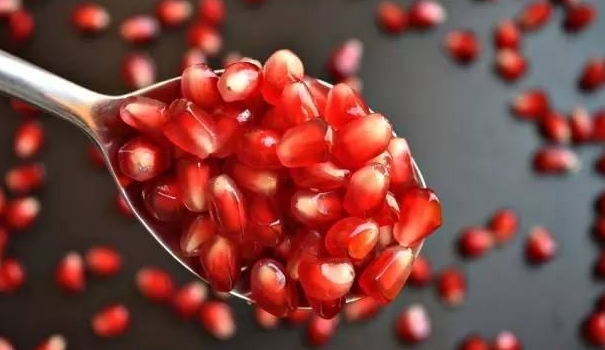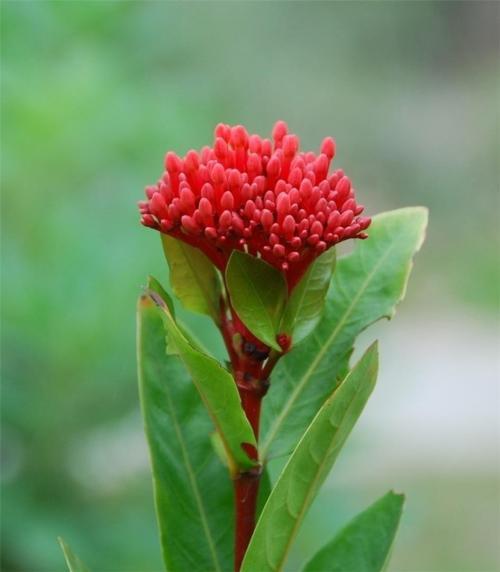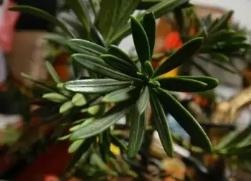How to make small bonsai with pomegranate seed
Pomegranates taste sweet, sour, warm, with insecticidal, astringent, phlegm, phlegm and other effects, pomegranate fruit is rich in nutrients, vitamin C content is one to two times higher than apples and pears, how to make pomegranate seeds cute and small potted plants? Next, we will bring you a small potted plant method of pomegranate seeds. Let's see.
How to make small potted plants from pomegranate seeds

Prepare pomegranate before making bonsai
tool
A ripe pomegranate, a suitable pot, enough humus soil
temperature
preferably above 20 degrees celsius
Steps for making bonsai
Good step.
First, put pomegranate seeds into water and carefully wash off the outer transparent film. Be careful to discard seeds floating on the surface.
Good step.
Prepare a small bowl, pour water and soak pomegranate in it. Soak for about eight days, remember to change the water every day.
the third step
Choose the container you like, with no holes in the bottom. Fill the potting soil until it is full for nine minutes, then spray with a small watering can to moisturize.
the fourth step
The pomegranate seeds are spread evenly over the soil and the seeds are covered with pebbles. Spray water back and forth with a watering can. Remember to spray water every day!
After waiting about three weeks, a small bonsai will start to have a small head! In another month, you will have a lush pomegranate seed forest!
How to grow pomegranate flowers
planting
Pomegranates can be grown year-round, but preferably in early spring and autumn. However, there is a slight difference between North and South. It is suitable for planting in north and south and autumn, which is more conducive to the growth of pomegranate.
Pomegranates generally choose high-quality seedlings, complete roots, full buds. Choose a deeper pot, plant deeply, apply a certain amount of base fertilizer, and keep it in the sun.
water and fertilizer management
Pomegranates are not resistant to drought, so pay attention to timely drainage during normal maintenance to prevent excessive watering of plants. Of course, in the germination stage, fruit expansion stage and deciduous stage, these three periods should be watered to ensure that the soil is moist and does not accumulate water.
In the same year as planting, you need to add fertilizer, adding the right amount of urea to fertilizer. Autumn leaves are usually buried in a pit next to the plant before fertilization. Pot fertilization keeps the fertilizer away from the rhizomes to avoid burning the roots. Fertilization is also required during fruiting to promote fruit fullness. In addition, in the growing season, according to the growth of plants, topdressing should be timely, nitrogen fertilizer should be the main factor to increase phosphorus and potassium in time.
Guaranteed sunshine
Pomegranates are an active plant. When people do not discover the beauty of pomegranate, pomegranate flowers sway in the wind, sunshine and rain, they grow very well. Therefore, pomegranate potted plants in the house must be guaranteed enough sunlight, as long as there is no water shortage, even if it is glare.
plastic trimming
The principle of pomegranate pruning is: tangible, intangible, intangible. Therefore, in pruning, depending on the growth space of each branch, branches and sufficient growth space allow them to continue to grow, while more dense branches can be pruned.
Notes on pomegranate flower cultivation
Thinning and fruit thinning
Pomegranates are relatively large and can bloom for a long time from May onwards. Since pomegranate flowers are lifted, pomegranate must be eaten. Therefore, when pomegranate blossoms, the florets will be cut off in time to ensure that the fruit is large and of good quality.
anthesis ring stripping
In general, ring stripping occurs in early May, which temporarily impedes the downward transport of photosynthetic organic nutrients, thereby increasing seed set.
Pomegranates flowering time
The pomegranate flowering period is concentrated in the spring and summer festival, from May to July every year. pomegranate flowers usually begin to sprout in late March and bloom in mid-late April. Flowers begin in May. It is June when pomegranate flowers bloom and early July when flowering ends. After flowering, pomegranate flowers will begin to bear fruit.
Pomegranates four seasons maintenance method
Spring maintenance
When spring temperatures rise to 10°C, pomegranates will be moved to outdoor maintenance (or open balconies) to enhance water and fertilizer management. Half a year, it is a fertilizer, NPK multi-element compound fertilizer. Do not apply single fertilizers, otherwise they will lead to shoot growth. Not conducive to growth.
Watering should be dry and wet, watering should be poured out, because pomegranate bonsai clay is deep, it is difficult to pour at one time, conditional can be watered by dipping method, put potted plants into the pool, let water slowly soak potted soil. However, the dipping method cannot be used frequently, once a month, and water is usually watered at other times.
summer maintenance
Pomegranates bloom in May. Management at this time is very important. Before flowering, we should pay attention to the application of phosphorus and potassium fertilizer, reduce nitrogen content and promote flower bud differentiation. When flowering, cut off a part of the flower, keep the large flower, remove the connection between the flower and the flower stalk into a "triangle," this part will not be produced, and will automatically fall off and consume nutrients within a certain period of time. time
To suspend flowering at fertilization. The results showed that strengthening water and fertilizer management could promote the growth of pomegranate fruit.
Autumn maintenance
Autumn is the best time to appreciate pomegranate, but after removing pomegranate, pay attention to fertilization, you can apply more phosphorus and potassium fertilizer, less or no nitrogen fertilizer, prevent plants from growing long branches, which is not conducive to the fruit next year. After defoliation, long branches, diseased branches, overlapping branches and weak branches are cut off. With the decrease of temperature, water and fertilizer gradually decrease, and winter preparation is completed.
Winter maintenance
Winter pomegranate flowers hibernate, if hibernation is not enough, it will affect the flowering of pomegranate. Most families will move the pomegranate to a warmer place before winter and have a heated or air-conditioned room, which is not conducive to hibernation. The optimum overwintering temperature of potted pomegranate is-2 to-5 ° C, and frostbite is below-10 ° C. If the temperature is higher than 5°C, it is not conducive to its complete dormancy.
Also pay attention to the time of winter to enter the room. It is too early to affect growth. It should re-enter in winter, when the temperature drops to-5 ° C, place it in a low temperature environment no higher than 0-2°C, control watering, and water once a month.
Time: 2019-05-07 Click:
- Prev

How to raise dragon boat flowers in winter
How to cultivate this kind of dragon boat flower which blossoms all year round? How do I cook the pot? Dragon Boat Flower is also called Yingyingdan or Bletilla Red. It is a relatively rich variety of flowers. It blossoms intensively and blossoms all the year round. It can blossom from March to December every year. How to plant this flower? What? one
- Next

How to raise the newly boiled Luohansong?
How many varieties are there in Luohan pine? What's the difference? In the past, I knew Luo Hanguo, but I didn't know Luo Hansong. I haven't even heard of it. It was only later that I learned that there was a bonsai of Luo Han Song. I naively thought that Luo Hanguo was the knot of Luo Hansong. Only one day, I found I was so ignorant.
Related
- Fuxing push coffee new agricultural production and marketing class: lack of small-scale processing plants
- Jujube rice field leisure farm deep ploughing Yilan for five years to create a space for organic food and play
- Nongyu Farm-A trial of organic papaya for brave women with advanced technology
- Four points for attention in the prevention and control of diseases and insect pests of edible fungi
- How to add nutrient solution to Edible Fungi
- Is there any good way to control edible fungus mites?
- Open Inoculation Technology of Edible Fungi
- Is there any clever way to use fertilizer for edible fungus in winter?
- What agents are used to kill the pathogens of edible fungi in the mushroom shed?
- Rapid drying of Edible Fungi

